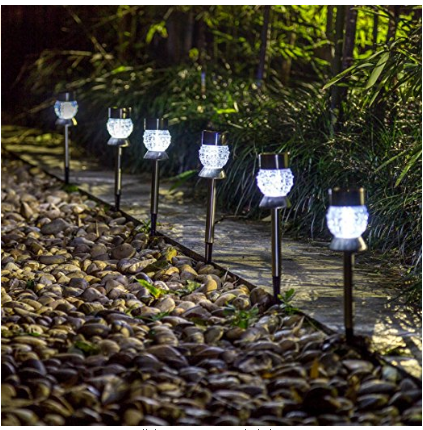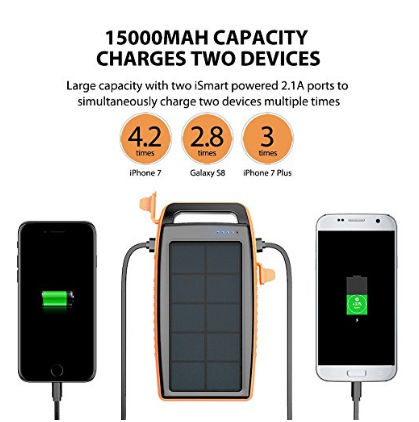|
A solar cover is a great way to capture the sun’s heat and take full advantage of this natural resource to heat your above-ground or in-ground swimming pool. The benefits of owning a solar cover are plentiful and serve a multitude of purposes. Cover Benefits:
7 Comments
Cited from www.PickMySolar.com :
" Time of Use Rate Impact on Residential Electricity Costs: A Southern California Edison Customer Case Study By Sagarika Bhattacharyya, Pallavi Rath, and Anurag Ghosh 19 March 2017 Southern California Edison (SCE), one of California’s three biggest investor-owned utilities, has created optional Time of Use rate schedules for residential customers. The new schedules mark a significant change in how customers are billed for the energy they use: Instead of a flat rate charged around the clock, customers are charged more for using more energy during times when overall electricity demand is highest, charged less when demand is lowest, and the base rate changes seasonally as well. Time of Use rates allow utilities to better recoup the costs of generation and allow their customers to save money through smarter management of energy use. In this case study, we analyze the effect that Time of Use (TOU) rates have on the overall cost of electricity for customers currently on a standard tiered residential rate structure. SCE’s new residential TOU structure includes three time periods: On-Peak, Off-Peak and Super Off-Peak. On-Peak refers to the daytime hours when the demand is highest for electricity from different consumers. This time period has the highest electricity prices, since generating facilities have to switch on more units to satisfy demand. In the mid-mornings and at night, energy demand drops, and this is the Off-Peak period. During the late-night hours, demand from residential consumers particularly significantly decreases, and thus the time is known as Super Off-Peak hours. The TOU rate structure is designed so that the cost of electricity is highest during on-peak hours in the late afternoon and early evening and lowest during Off-Peak hours at night and in the early morning. It encourages consumers to use more energy during early mornings, late evenings, nights and weekends. Time of Use time periods and rates are different for different utilities and typically do not change more than twice a year; in the summer and winter. To demonstrate how a TOU rate schedule would affect residential consumers, we will use the case of a residential consumer, “Bob Musselman,” to compare the energy consumption and electricity bill without implementing the TOU rates – in other words, under the standard residential rates serving most residential customers – and with implementing TOU rates. For the case study we analyzed Bob’s energy consumption data from February 2014 to February 2015. Baseline regions are defined by the California Public Utilities Commission (CPUC), which says that every consumer receives a preset amount of energy depending on location, season of the year, and whether a consumer’s household is fully or partially electrified. Therefore, a consumer dependent solely on electricity would have a higher baseline. The majority of customers currently are under the standard residential tiered rate structure. Tiered rate structures charge higher rates for energy use that exceeds the baseline. The tier (or level) following it would be priced even higher. The daily kilowatt-hour (kWh) allocation for the baseline tier differs by location. In Bob’s case, he falls under SCE’s baseline region 14, which includes the following kWh allocations: Season Tier 1 ($0.16/kWh) Tier 2 ($0.23/kWh) Tier 3 ($0.29/kWh) Summer (Basic) Baseline 15.5 kWh 101% to 200% 15.5 to 31 KWh Over 200% >31 KWh Winter (Basic) Baseline 10.6 kWh 101% to 200% 10.6-21.2 KWh Over 200% >21.2 kWh Summer (All-Electric) Baseline 18.4 kWh 101% to 200% 18.4-36.8 KWh Over 200% >36.8 KWh Winter (All-Electric) Baseline 22.9 kWh 101% to 200% 22.9-45.8 KWh Over 200% >45.8 KWh Table 1: SCE Baseline Region 14 Tiered Rate Structure Table 1 shows the baseline allocation of region 14 in the basic and all-electric categories. We can see that the all-electric baseline increase is significant in winter – since consumers would use heaters more frequently – while during the summer, the increase in baseline allocation is just 20 percent. On the flip side, basic allocation for summer exceeds winter by almost 5 kWh, as this extra energy will possibly be used for air conditioning. Year (2014-2015) Electricity Consumption (kWh) Cost Summer (June-September) 4,869.86 $575.96 Winter (October-May) 9,840.35 $1,814.94 2014-2015 14,710.21 $2,390.90 Table 2: Total Cost under Standard Residential Plan Structure Table 2 shows energy costs broken down seasonally. Bob has used 14,710.21 kWh of energy that accounted for $2390.90 in total. SCE offers different TOU rate options depending upon monthly energy usage, and sets the threshold energy usage for the TOU rate plan. The utility has also created four TOU rate options, depending on if a consumer generally uses more or less than 700 kWh per month (TOU-D-A or TOU-D-B); the utility also has plans for consumers who charge an electric vehicle at home. Tier Structure Time Period Weekday (M-F) Weekday ($/kWh) Weekend (Sat. & Sun.) Weekend ($/kWh) TOU-D-A On-Peak 2pm to 8pm 0.44 - - Super Off-Peak 10pm to 8am 0.13 10pm to 8am 0.13 Off-Peak 8am to 2pm & 8pm to 10pm 0.28 8am to 10pm 0.28 TOU-D-B On-Peak 2pm to 8m 0.32 - - Super Off-Peak 10pm to 8am 0.13 10pm to 8am 0.13 Off-Peak 8am to 2pm & 8pm to 10pm 0.17 8am to 10pm 0.17 Table 3: TOU Rates for Summer (June to September) Tier Structure Time Period Weekday (M-F) Weekday ($/kWh) Weekend (Sat. & Sun.) Weekend ($/kWh) TOU-D-A On-Peak 2pm to 8m 0.33 - - Super Off-Peak 10pm to 8am 0.14 10pm to 8am 0.14 Off-Peak 8am to 2pm & 8pm to 10pm 0.28 8am to 10pm 0.28 TOU-D-B On-Peak 2pm to 8m 0.22 - - Super Off-Peak 10pm to 8am 0.14 10pm to 8am 0.14 Off-Peak 8am to 2pm & 8pm to 10pm 0.16 8am to 10pm 0.16 Table 4: TOU Rates for Winter (October to May) The most common point of difference is the higher summer price during peak hours compared to winter’s peak-hour price, as seen in Tables 3 and 4. This difference is due to the utility’s need to bring additional power generation online to supply peak demand; the energy produced by these “peaker plants” is priced significantly higher. We calculated Bob’s utility bill under the TOU-D-B rate, because his monthly energy consumption is above 700 kWh. On weekdays, for the same rate schedule (TOU-D-B), the peak hour charge differs by 10 cents for summer and winter (Tables 3 and 4). The weekend and weekday rates for Super Off-Peak periods are nearly identical year-round. Year (2014-2015) Consumption (kWh) Cost Summer (June to September) 4,869.86 $863.80 Winter (October to May) 9,840.35 $1,581.67 Total Consumption 14,710.21 $2,445.47 Table 5: Total Cost Under the Time of Use Rate Structure Rate Structure Energy Consumed (kWh) (2014-15) Cost Difference: $54.57 Time of Use (TOU) 14,710.21 $2,445.47 Standard Residential Tier Structure $2,390.90 Table 6: Rate Structure Cost Difference Bob spent $2,390.90 under the standard tiered rate structure for 2014-15 (Table 1). Under TOU-D-B, he would have paid $2,445.47 (Table 5), close to $55 (2.3 percent) more than the standard rate schedule (Table 6). In Bob’s case, although his energy consumption during On-Peak hours of summer and winter was 14 percent and 12 percent of their respective total, On-Peak consumption contributed 25 percent and 17 percent of their seasonal bills. These numbers shed light on how useful it might be to curtail energy usage during peak hours and shift toward off-peak hours under the TOU rate structure. Switching to TOU gives a consumer the option to use energy-intensive appliances, such as washing machines, dryers, dishwashers, and electric vehicles, during off-peak times, since more energy can be used at a significantly cheaper price, leading to savings for the consumer. Pick My Solar is developing a tool that uses a customer's annual energy bill and estimates the cost changes when they change from the standard tiered rate structure to a TOU rate structure. This will ultimately help consumers assess their energy options by reviewing the options available and making an informed decision." |
AuthorSolarLife-Changers frequently cite blogs created by other brilliant minds in the industry; we also often create our own content. ArchivesCategories |




 RSS Feed
RSS Feed